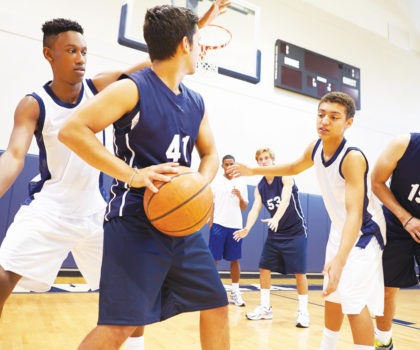Precision Orthopaedic Specialties offers a less invasive option for meniscus repair

By Patricia Nugent
The knee is one of the most complex joints in the body. Without it, a person could not stand, jump, pivot, squat, kneel, walk or run. With all that pressure and performance on the line, an integral component of this hard-working hinge joint is the meniscus, or C-shaped cartilage, that acts as a shock absorber.
“Each knee has two menisci that cushion the cartilage that coats the end of the bones in the joint,” says Dr. Kraig K. Solak, an orthopaedic surgeon at Precision Orthopaedic Specialties.
“There are two types of tears that can occur, acute, from injury, or chronic, from degenerative wear and tear. The acute traumatic injury usually happens when someone stops fast, decelerates, pivots quickly or squats deeply. Many of these acute tears are repairable. Chronic tears typically require trimming to recontour tears to the degenerative tissue.”
First an MRI is taken to accurately diagnose the extent and type of the tear.
“Arthroscopy is a minimally invasive outpatient procedure to stitch a tear through a few less than one-centimeter incisions,” says Dr. Solak. “The procedure has come a long way the last five to 10 years.”
In the past, he reports that surgeons would often remove a large portion or the entire meniscus, and the patient would need a knee replacement by the time they reached age 55, if not sooner. They don’t do that anymore.
“Now we have more sophisticated capabilities,” he says. “The procedure itself has become smaller, with more accurate equipment that allows ‘all inside’ arthroscopic repair. This is less painful, less traumatic and results in better healing. There’s a smaller chance of affecting the neurovascular structures of the knee.”
Total recovery time is about four to six months, depending on the severity of the injury. Patients are generally weight-bearing immediately following surgery, and athletes typically wear a brace for about six weeks.
“There’s not really much you can do to prevent a torn meniscus,” he says. “However, there is a good bit of research that indicates single-sport athletes in their adolescent years are more susceptible to these types of overuse injuries. High school age and younger athletes are better off playing more than one sport.”
Dr. Kraig K. Solak is an orthopaedic surgeon with fellowship training in sports medicine. Precision Orthopaedic Specialties has locations in Auburn, Beachwood, Middlefield and the main office is in Chardon, at 150 Seventh Avenue, Suite 200. Call 440-285-4999 or visit PrecisionOrthopaedic.com for more information.
